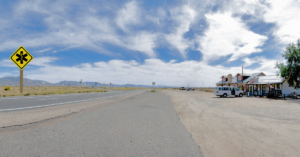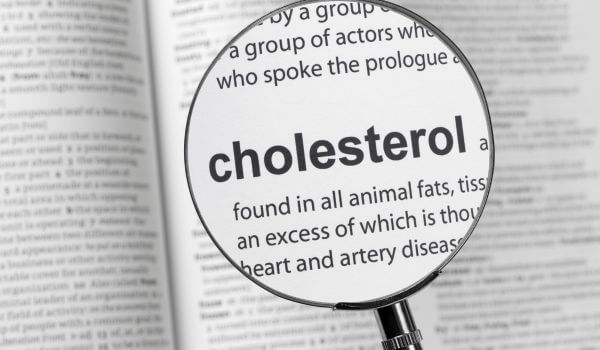 More and more people are complaining that their access to convenient pharmacy outlets has steadily declined for most of this century. The current lexicon is the growth of a “pharmacy desert,” affecting nearly 40% of non-urban communities in America.
More and more people are complaining that their access to convenient pharmacy outlets has steadily declined for most of this century. The current lexicon is the growth of a “pharmacy desert,” affecting nearly 40% of non-urban communities in America.
The old image of an independent, friendly local drug store that sold ice cream sodas alongside cough syrup and antibiotics has been pushed out of reach of many by massive mega-chains that are taking the place of the familiar privately-owned druggist.
Corporate giants like these new owners constantly compute their outlets’ profitability. They maximize their returns by closing the low-performance businesses without full consideration of the impact that the closure of a branch can have on an isolated population.
Pharmacy service forms part of a broader framework of lack of access to general healthcare facilities – a “healthcare desert.” As well as pharmacies, other essential healthcare services have steadily withdrawn outside of highly populated urban areas. A healthcare desert is now defined as an area where people lack adequate access to six essential healthcare services:
- Pharmacies
- Primary care providers
- Hospitals
- Hospital beds
- Trauma centers
- Low-cost health centers.
Eight out of ten US counties lack at least one of these facilities, meaning that one-third of the US population is affected. For pharmacy access, nearly 40% of all counties rank as deserts, in which people can’t get to a pharmacy even by car within 15 minutes, and more than double that number have at least some level of difficulty in getting a prescription filled. Some of the most affected areas lie in a belt stretching from the far north in Montana and North Dakota and down through South Dakota, Nebraska, and Texas. But a desert can pop up in surprising places, such as counties in the north-east of New Hampshire and northern Michigan, where the population lives more than 15 minutes away from a pharmacy, even by car.
Defining what isolates a community from good pharmacy services is more than just a matter of distance from the nearest working drug store. In some suburbs of large cities, the local population may not enjoy the ownership of private cars, and public transport may need to be improved, better directed, or is just too expensive. In such a scenario, even though there may be a drugstore just one mile away, it might be too hard for most residents to reach, especially for older and unwell Medicare recipients. In rural communities, there nearest drugstore could be many miles away.
The creation of these desert areas closely follows socioeconomic patterns. Suburbs with higher concentrations of Black, Hispanic, and Latino households represent a disproportionately high ratio of regions that meet the definition of a pharmacy desert.
People who live in a rural area further than 10 miles away or in an urban neighborhood more than one mile away from the nearest pharmacy are regarded as being in the desert. If the district or town is low-income with low car ownership, those thresholds are halved, to five miles and half a mile, respectively.
The consequences of living in a pharmacy desert
It’s not just a matter of inconvenience. If people can’t get access to a pharmacy to obtain their prescribed medications, there may be other serious consequences. Without easy access to a pharmacy, people may be more likely to simply not take their necessary medications, which can have life-threatening consequences and substantially impact the healthcare system. Non-adherence to prescribed medical therapies is a part of the massive burden on the US healthcare system arising from non-optimized medication regimens. A 2016 survey was conducted to get a handle on the cost to the US healthcare system from poor medication prescription and non-adherence (part of which comes from lack of access to dispensaries). It highlighted a staggering range of between $495 billion and $672 billion annually, around 12% to 18% of total US healthcare spending that year.
The problem isn’t exclusive to the US but is more pronounced there. In the UK, the government has just introduced a new measure known as the Pharmacy Access Scheme (PhAS). It’s meant to ensure that additional monthly payments will be made to all eligible pharmacies in areas where there are fewer pharmacies. The purpose is to keep the number of closures to a minimum and retain better access for patients in areas where the number of pharmacies falls below the optimum levels.
So far, Australia has been able to avoid most of these problems, due mainly to the hard work of the Pharmacy Guild of Australia, which believes that the standard of health care for rural/remote areas should be equal to the standards available in metropolitan areas and that all Australians have a right to equity and access to community pharmacy services. The Guild maintains over 5,700 community pharmacies, particularly in areas where they can also supply some of the services of other health professionals.
What is making the pharmacy desert grow in the US?
Comparing the situation in the examples we gave of the US, the UK, and Australia, the most significant difference is that in the latter two countries, the healthcare sector is mainly under the direct control of central authorities (the National Health Service in the UK, and Medicare in Australia – not to be confused with Medicare/Medicaid in the US). When it comes down to how decisions are made, and actions are funded, the US is a “free market economy” that sets very few standards and has little control, partly because each state can regulate its healthcare system in its own way and also because the delivery of pharmaceutical services is not in any significant way different from any other business.
Most of the major retail drugstore chains locate their pharmacies in areas where they can generate maximum revenue at the lowest possible cost. Part of the problem leading to pharmacy closures is that most prescription drugs do not generate a per-deal profit. It’s estimated that nearly 80% of all these transactions are at break-even or at a loss. This problem comes primarily from how healthcare insurers negotiate drug reimbursement levels. There are even official job descriptions given to the people inside the major retail pharmacy chains that make these decisions. They are known as Pharmacy Benefit Managers (PBMs), and they are the ones that create the most advantageous pricing structures on behalf of insurers, setting the reimbursements between pharmacy chains and distributors or manufacturers. Independent pharmacies that don’t get these favorable prices have to charge their customers more, and they can lose the business to the larger chains. Without enough revenue, they are either absorbed into one of the mega-pharmacy conglomerates or forced to close.
This means that decisions to open, manage or close individual pharmacies are made purely on economic grounds, with little weight given to how these will affect the customer base. Pharmacies can and do get closed without any thought to the welfare of the surrounding population. In that way, a desert spreads throughout the country and will continue to do so as long as corporate profit drives decision-making.
Without a strong directive from the Federal Government, there will probably be no short-term steps that can slow down the growth of the pharmacy deserts. One mitigating factor is the growth of reputable online pharmacies that can decrease customers’ dependence on going out to get their prescriptions filled.
FAQ
What are the threats to a pharmacy business?
Drug store owners face pressure from many competitive threats, including mail-order pharmacies and pricing challenges such as low reimbursement levels and a labor shortage.
Is owning a pharmacy profitable?
Even though pharmacies play an essential role in our society, it’s still necessary to remember that they are still commercial businesses that need to be profitable. Otherwise, they can’t stay operational.
How do local pharmacies make money?
Most independent pharmacies generate more than 90% of their revenue from prescriptions. However, this may be a small proportion of overall profitability since the prices the pharmacy can charge are highly competitive. Still, the cost of products bought from a manufacturer or a wholesaler may be set high by external factors.
Why are pharmacies struggling?
Reduced government financial support, rising operational costs, and staff shortages have been blamed for the closures of pharmacies in the UK. This is despite increasing patient demand. Pharmacists are warning that many more local businesses could close without help.
















